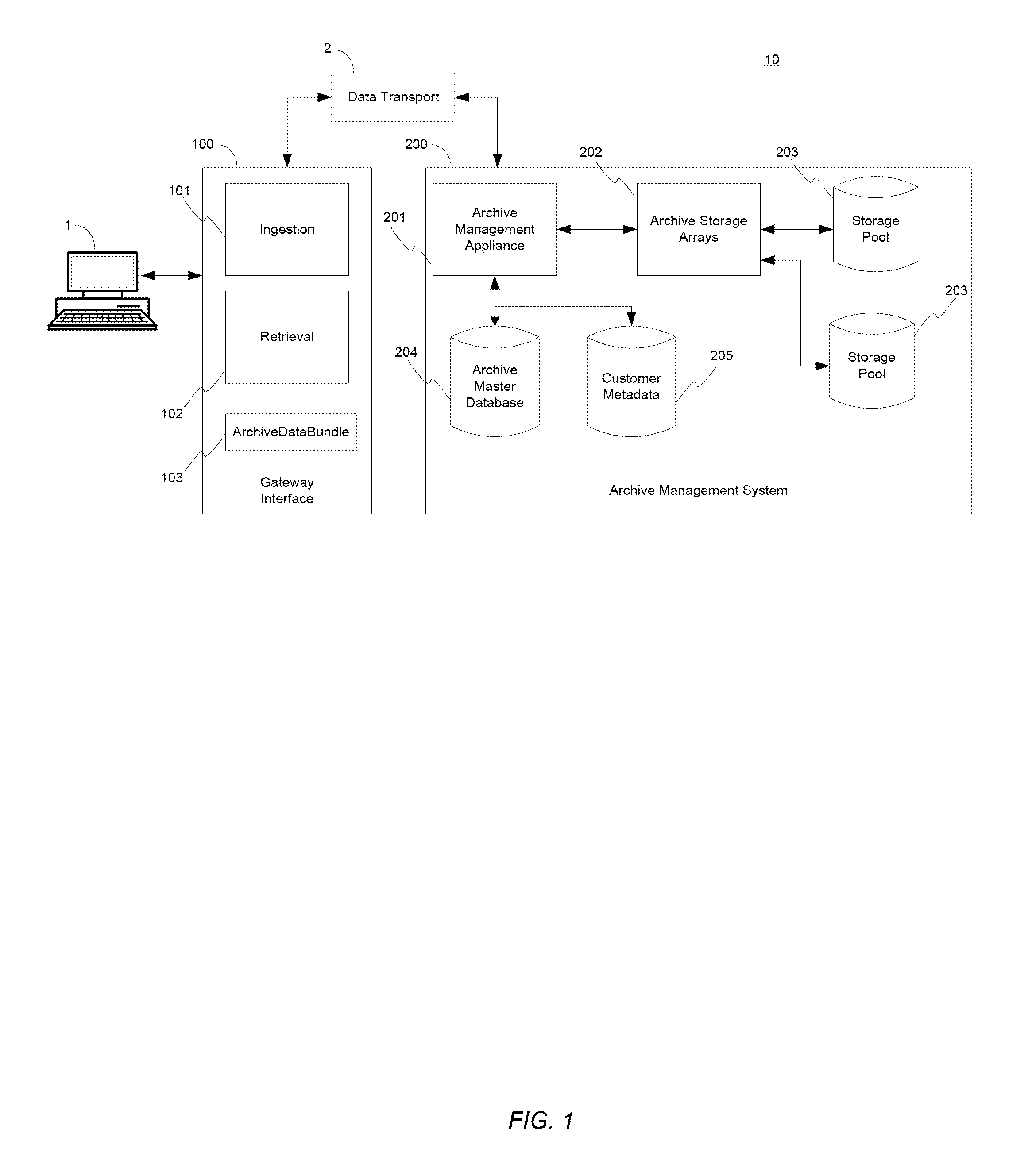Data archiving and retrieval system
a data archiving and retrieval system technology, applied in the field of data archiving, can solve the problems of increasing the cost, increasing the cost, and reducing the availability of primary storage for data targeted for archiv
- Summary
- Abstract
- Description
- Claims
- Application Information
AI Technical Summary
Benefits of technology
Problems solved by technology
Method used
Image
Examples
Embodiment Construction
[0024]FIG. 1 is a block diagram of the archival and retrieval system 10. In this embodiment, a Gateway Interface 100 resides at the customer site running software that handles the interface between a customer and the archival and retrieval system 10. It receives the customer data targeted for archiving, optionally can compress and encrypt the data, then securely and reliably transmit it to an archive facility running the Archive Management System 200 via a bidirectional transport facility 2, e.g., an encrypted VPN connection, fiber channel, physical media transport, 802.11 system, etc. The Gateway Interface 100 has enough storage to cache a significant amount of customer data. Caching the data allows the system to efficiently manage the transfer of the data from many customer locations to an archive facility using dynamic ingestion scheduling. Should the amount of data to be archived exceed the practical limits of what the broadband connection can achieve, then the data can be writt...
PUM
 Login to View More
Login to View More Abstract
Description
Claims
Application Information
 Login to View More
Login to View More - R&D
- Intellectual Property
- Life Sciences
- Materials
- Tech Scout
- Unparalleled Data Quality
- Higher Quality Content
- 60% Fewer Hallucinations
Browse by: Latest US Patents, China's latest patents, Technical Efficacy Thesaurus, Application Domain, Technology Topic, Popular Technical Reports.
© 2025 PatSnap. All rights reserved.Legal|Privacy policy|Modern Slavery Act Transparency Statement|Sitemap|About US| Contact US: help@patsnap.com



